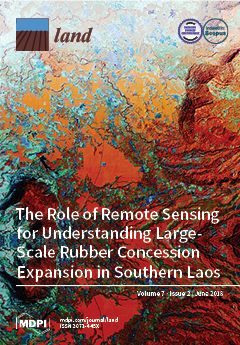Resource information
There have been drastic changes in resource use practices and land-use patterns in the middle mountains of Nepal as a result of human transformation processes of the environment. This study aimed at assessing land-use and land-cover changes, especially those related to forest cover changes, in Phewa Lake watershed—a typical middle mountain watershed of western Nepal—using multi-temporal Landsat images from 1995, 2005 and 2017. Landsat images of each year were classified individually using object-based image classification into four land-use and land-cover types: agriculture and built-up, forest, waterbodies and other. Post-classification comparison was employed to quantify the extent and rate of changes, which was further extended to quantify the level of persistence, gains, losses, and swaps of forests. Furthermore, temporal trajectories of land-cover associated with forest cover changes were established, and their spatial pattern analyzed. The results show that, between 1995 and 2017, forest cover increased by 6.8% with a corresponding decrease in the extent of all other land-cover types. Dynamic transitions and internal trading among forest and agriculture and built-up category were observed, revealing more complex patterns than the commonly assumed linear and irreversible forest cover transformations in the mountains of Nepal. Our approach to assess major signals of forest cover transitions and change trajectories will help link patterns to the process of change including deforestation and forest regeneration. This would, in turn, form the basis for formulating practical conservation and management strategies for Phewa Lake watershed and other mountain watersheds of Nepal.


